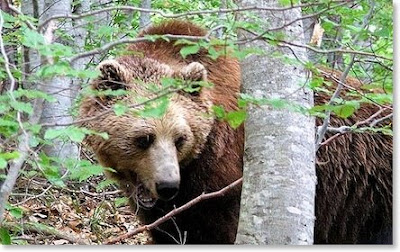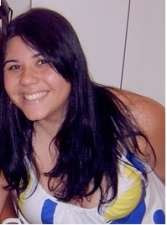R S T L N E
22) Go." is the shortest complete sentence in the English language
Welcome all of you to my blogger!!! It'll contain information about my private classes, interesting facts and photos,links for exercises,contests,fórum,news,humor,cultural facts and so on, Be confortable to coment and make suggestions... enjoy guys.. Kisses Teacher Vivi
R S T L N E
22) Go." is the shortest complete sentence in the English language

Most Halloween festivities are based on folk beliefs concerning supernatural forces and spirits of the dead. Halloween decorations typically feature imagery associated with supernatural beings such as witches, werewolves, vampires, and ghosts.
Halloween, a time of magic, also became a day of divination, with a host of magical beliefs. Images thought to symbolize bad omens—such as black cats, bats, and spiders—are also commonly featured in Halloween decorations. Elements of the autumn season, such as pumpkins and scarecrows, are also reflected in symbols of Halloween.
Particularly in America, symbolism is inspired by classic film, such as fictional figures like Dracula and Frankenstein's monster in the vein of Boris Karloff and Alfred Hitchcock. Homes are often decorated with these symbols around Halloween.
Black and orange are the traditional colors of Halloween. In modern Halloween images and products, purple, green, and red are also prominent.
The use of these colors is largely a result of advertising for the holiday that dates back for over a century. They tend to be associated with various parts of Halloween's imagery.
Black death, night, witches, black cats, bats, vampires Orange pumpkins, jack o' lanterns, Autumn Purple night, the supernatural, mysticism Green goblins, monsters Red blood, evilColor Symbolism

The main event of modern US-style Halloween is trick-or-treating, in which children dress up in costume disguises and go door-to-door in their neighborhood, ringing each doorbell.
According to this custom, children greet each homeowner with the cry "Trick or Treat," suggesting that some sort of prank will be played unless treats are provided.
Formerly, trick-or-treaters vandalized the house if no treats were produced or if the treats met with their disapproval. Since the early 20th century, however, the threat of tricks has been largely ceremonial.

According to the folk tale, after Jack died, he was denied entrance to Heaven because of his evil ways, but he was also denied access to Hell because he had tricked the devil. Instead, the devil gave him a single ember to light his way through the frigid darkness. The ember was placed inside a hollowed-out turnip to keep it glowing longer.
The Irish used turnips as their "Jack's lanterns" originally. But when the immigrants came to America, they found that pumpkins were far more plentiful than turnips. So the Jack-O-Lantern in America was a hollowed-out pumpkin, lit with an ember.
There is something unique about the way each person learns language. If you are considering spending more time on improving your knowledge of English, it could be helpful to become more aware of your unique way of grasping and coding language. Gaining greater awareness of your personal learning and coding style can help you to develop a study strategy that works. What kinds of learning activities are most enjoyable for you? What helps you most in remembering new words, idioms and grammatical structures? When you try to recall words you have learned, are your memories of them visual? That is, do you inwardly “see” the words written out in your mind’s eye? Or, do you inwardly “hear” them in your mind’s ear? Or perhaps you feel the words and have a sense of moving with their rhythm. In making a study plan, it is important to Consider what to learn but also how to learn it.The more you know about how you best take in and retain language, the better the chances you can develop a study plan that is successful because it fits your learning style.
The way each of us processes information is very individual and personal. It can be interesting and useful to hear how each of us does it. We can get ideas from each other about methods of learning—and also appreciate the very diverse ways that the human mind can work.
HOMEWORK!!!
Write two -- three paragraphs (about one side of a page) explaining how you tend to remember new words or grammatical items. When you recall a word or expression, do you inwardly “see” the word in your mind’s eye? Or do you inwardly “hear” the word or remember how it sounded when you heard someone say it in a particular situation (or in a film or TV program)? Do you have any other way of recalling words? Give an example of a word or expression you wanted to remember and how you succeeded in doing so.

Click above to watch the video:
http://www.youtube.com/watch?v=XUJ-yBd2B6c
Watch the video
Listen to it a couple of times
Read the transcript (the text) a couple of times while you listen.
Listen again, this time without reading the text.
Come back another time and listen again without looking at the text (how much did you remember?).
Trascript: Bush and blair singing together:
My love, there is only you in my life
The only thing that is bright.
My first love
You are every breath that I take
You are every step I make
And I, I want to share
All my love with you
No one else will do.
And your eyes they tell me how much you care!










 Mount Rushmore National Memorial, near Keystone, South Dakota, is a monumental granite sculpture by Gutzon Borglum (1867–1941), located within the United States Presidential Memorial that represents the first 150 years of the history of the United States of America.
Mount Rushmore National Memorial, near Keystone, South Dakota, is a monumental granite sculpture by Gutzon Borglum (1867–1941), located within the United States Presidential Memorial that represents the first 150 years of the history of the United States of America.









